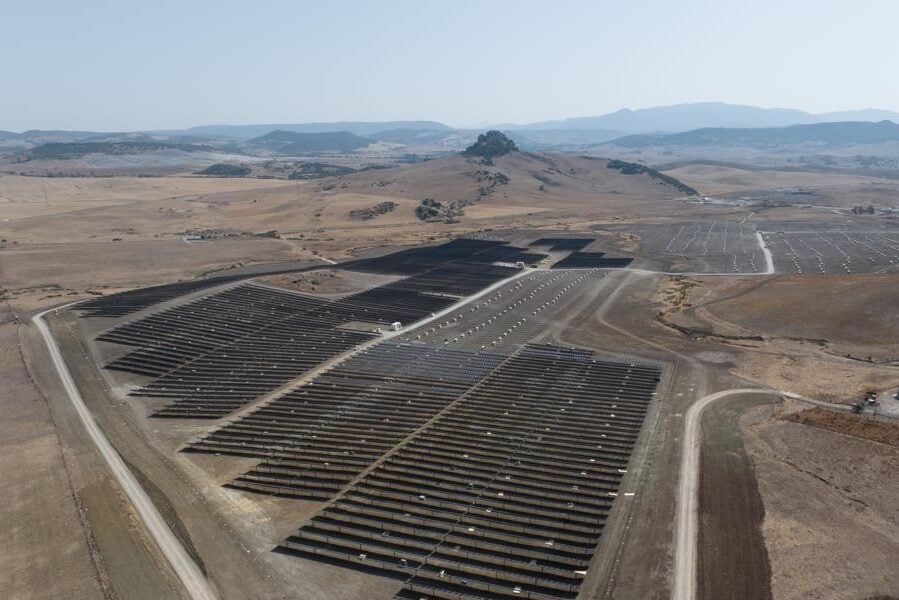How solar projects are tackling power market challenges
September 27, 2024

The current power market landscape
Challenging conditions in many European power markets are leading developers of larger solar projects to explore new ways of generating revenue and better managing existing operations. High volatility in Europe’s wholesale power markets, coupled with low or even negative power prices as more renewable energy comes online, are impacting revenues from large-scale projects. For instance, Germany registered 78 hours of negative power prices in May, while Spain recorded an average wholesale power price of €13.76/MWh (US$15.38) in April, a historic low.
Some projects that were considered viable and attractive in a higher power price environment are now feeling the impact of the fall in forecast revenue, resulting in more marginal returns.
The recent drop in average power prices is creating financial challenges for developers and asset owners, particularly for assets with higher capital expenditure and those in areas with lower irradiation.
Additionally, seasonality in Europe remains an issue, and the so-called ‘cannibalisation effect’—high levels of PV output in midday hours, which can depress wholesale prices—is having a varying impact. The effects of this are becoming more acute in southern Europe and in countries where there is high deployment of PV.
In the UK, most operational PV assets are either supported by government-backed mechanisms or have long-term fixed-price power purchase agreements (PPAs), helping to alleviate the impact of cannibalisation. However, this is a rising issue the market will need to navigate.
Curtailment events, when grid operators request certain plants to stop or reduce producing power due to grid congestion issues or in periods of excess generation compared to demand, have become more common in recent years.
Navigating regulatory and financial challenges
The path to an efficient and sustainable energy system is fraught with complex regulatory frameworks, financing barriers and the urgent need for decarbonisation. Solar projects, however, play a pivotal role in addressing these issues. Regulations in the energy sector are often stringent and vary significantly across regions, covering everything from land use and environmental impact assessments to grid connection standards and tariff structures. Navigating this complex environment can be daunting for solar developers.
However, the distributed nature and scalability of solar power often make it easier to match localised regulatory requirements compared to more centralised fossil fuel plants. Financing large-scale energy projects has typically required significant upfront capital and long-term investment. Due to declining costs, solar energy has become one of the most financially viable options and therefore most countries now view solar power as instrumental in significantly reducing long-term energy costs.
The push for decarbonisation is a global imperative. Solar projects are critical in reducing greenhouse gas emissions and contributing to cleaner air and healthier communities. Solar energy’s ability to significantly lower carbon footprints makes it indispensable in national and international climate action plans.
Addressing price cannibalisation and curtailment
Solar plants typically generate revenue through mechanisms such as government-supported schemes, PPAs and participation in wholesale power markets. Low power prices have reduced revenue for many solar plants, especially those selling their production at volatile market prices.
Price cannibalisation and curtailment are growing concerns for solar plant owners across Europe. We are observing how, underpinned by the inherent technical flexibility of solar plants, various strategies are being explored to mitigate these issues.
Technical solutions
- Hybridisation: Combining solar with technologies such as battery energy storage systems (BESS) or wind turbines to optimise energy production and reduce market price dependency.
- Synchronous compensators: Adding devices that generate ‘synchronous power’ to help grid operators manage the power output.
- Automatic power reduction systems: Installing systems, like the Spanish SRAP (Sistema de Reducción Automática de Potencia), that can automatically reduce and more efficiently help manage power output.
Market solutions
- Ancillary Services: Participating in ancillary services, such as automatic frequency restoration reserve (aFRR) or manual frequency restoration reserve (mFRR) in several countries in Europe.
Off-take solutions
- Government-supported programmes: Securing long-term fixed prices through mechanisms like the UK’s contracts for difference (CfDs) or the Spanish REER programme, providing a buffer against market volatility. However, recent changes in rules mean CfD assets will still be exposed to negative pricing.
- PPAs: Signing long-term PPAs to ensure stable revenue streams.
- Futures markets: Trading power futures in platforms, such as the European Energy Exchange (EEX) allow for locking in future power prices, offering financial predictability.
Governments can further support solar deployment in the EU
Solar curtailment events have become more common, and these events are primarily attributed to technical congestion at specific grid nodes or lines. To reduce curtailment, European governments can drive the necessary investments in grid infrastructure and flexible storage solutions. Upgrading substations and transmission lines to handle increased loads from multiple, intermittent renewable sources is necessary. These investments will alleviate congestion issues and enhance grid capacity, reducing the need for curtailment events.
In addition, promoting the deployment of flexibility solutions, such as battery storage systems, can help balance the grid during periods of excess generation and lower demand. Governments can incentivise these investments through clear policy roadmaps and attractive pricing signals for developers, for example through capacity markets. As solar projects continue to address the myriad challenges facing modern energy grids, innovative technical, market, and regulatory strategies will be paramount.
Reducing volatility impacts, managing cannibalisation, and investing in grid and storage solutions will help solar energy further cement its role as a cornerstone of global energy systems. The ongoing push for policy reforms, financial innovations and technological advances will continue to pave the way for solar energy’s growth, helping the world meet its energy and climate goals.
Marcus Peech and Tomás García are senior directors for energy and infrastructure advisory at JLL.
Search
RECENT PRESS RELEASES
Related Post



